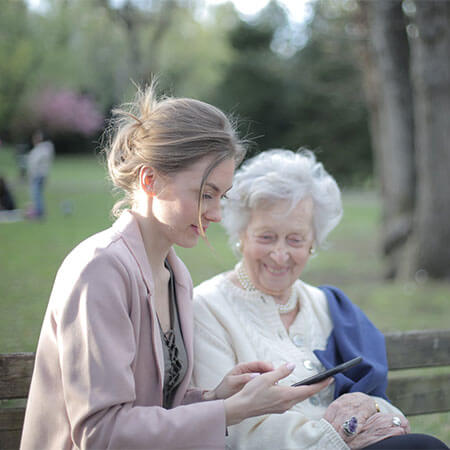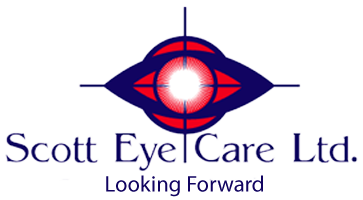
Using Your Smartphone If You Have Diabetic Retinopathy
With smartphones, we can easily stay in touch with loved ones, watch videos, listen to music, and manage finances. But for a person with vision loss due to diabetic retinopathy, using a smartphone can be challenging. Fortunately, with the help of low-vision aids and the phone’s accessibility features, people with diabetic retinopathy can continue to use their smartphones no matter the severity of their vision loss.
What is Diabetic Retinopathy?
Diabetic retinopathy is a complication of diabetes that occurs when the blood vessels in the back of the eye (retina) start to deteriorate, causing them to leak fluid and bleed. Fragile new blood vessels can also be created, further adding to the risk of retinal bleeding and even scarring. The longer a person is diabetic, the higher their chance of developing diabetic retinopathy.
The early stages of diabetic retinopathy may have no symptoms or cause only mild vision problems. With time, this condition can potentially lead to vision loss.
Symptoms of Diabetic Retinopathy Include:
- Blurred vision
- Sudden vision loss
- Empty or dark areas in your vision
- Fluctuating vision
- Spots or dark floaters in your vision
- Impaired color vision
Because diabetic retinopathy often starts without obvious signs and symptoms, it is vital for patients with type 1 or type 2 diabetes to undergo regular comprehensive dilated eye exams for early detection. If you or a loved one has been diagnosed with diabetic retinopathy, speak with Ronald Weingart, OD about the many options to maintain your eyesight and limit any changes to your vision. Even in the event of some vision loss, there are a wide range of low vision aids and devices that can keep you functioning independently.
One device that can significantly help you is the smartphone.
How Can a Person with Diabetic Retinopathy Use a Smartphone?
Many people with diabetic retinopathy can benefit from their smartphone’s features by utilizing low vision aids and adjusting the phone’s accessibility features.
There are several low vision aids and devices that can help you read the screen of a smartphone. Ronald Weingart, OD will evaluate which low vision aid is right for you.

Some low vision aids and devices that help those with diabetic retinopathy use a smartphone and see other objects close-up include:
- Bioptic telescopic glasses
- Low vision magnifying reading glasses
- Prismatic reading glasses
- Telemicroscope glasses
- Reverse telescopic glasses
- Custom-made optical systems
- Digital magnifiers or close circuit television (CCT)
- Hand-held magnifiers
Adjusting Your Phone’s Accessibility Settings
Most smartphones now have built-in software that makes their functionality accessible to the visually impaired.
Apple products tend to be popular among the blind and visually impaired, as every Apple product comes with accessibility features that make the phone’s functionality not dependent on sight. Android products also have accessibility features, but currently are not as fine-tuned as Apple’s.
By activating “VoiceOver” (on Apple products) or “TalkBack” (on Android products), you’ll be able to use your phone without relying on your vision. These settings can read all incoming messages and texts, and allow the user to perform various tasks using tapping and swiping motions.
In the early stages of diabetic retinopathy, when vision loss is at a minimum, a smartphone’s settings can be adjusted to:
- Increase the contrast between your wallpaper and icons. A busy wallpaper can make it difficult to locate and differentiate between app icons. A solid-color wallpaper can make it easier on the eyes.
- Change font size and brightness.
- Use “voice assistants” and “text-to-speech” features to dictate text.
Learning to live with vision loss can be difficult, but we can help. If you or a loved one suffers from impaired vision due to diabetic retinopathy or any other eye condition, we can offer a wide range of the latest low vision aids to enable you to use your smartphone and continue to do the things you love. For further inquiries or to schedule an appointment, call Low Vision of Fox Valley today.
Low Vision of Fox Valley serves patients from Oswego, Naperville, Aurora, Chicago, and throughout Illinois.
